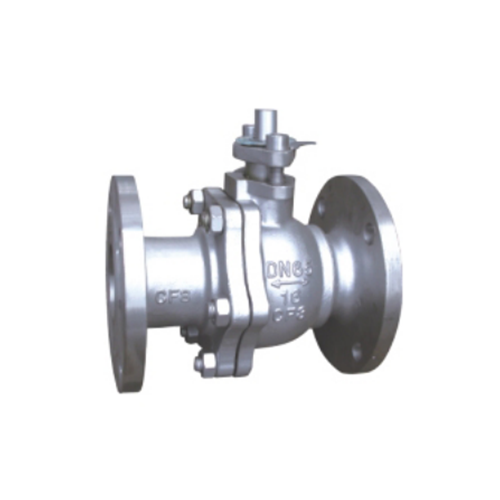
How to Maintain Butterfly Valves in Marine Environments
Introduction
Butterfly valves are widely used in marine applications due to their compact design, ease of operation, and cost-effectiveness. They regulate fluid flow in pipelines by rotating a disc perpendicular to the flow direction. However, marine environments present unique challenges, including saltwater corrosion, biofouling, and extreme weather conditions. Proper maintenance is essential to ensure longevity, reliability, and optimal performance.
This guide provides a comprehensive approach to maintaining butterfly valves in marine environments, covering inspection, cleaning, lubrication, corrosion prevention, and troubleshooting.
---
1. Regular Inspection and Monitoring
1.1 Visual Inspection
Regular visual inspections help detect early signs of wear, corrosion, or mechanical failure. Key areas to inspect include:
- Valve Body: Check for cracks, pitting, or corrosion.
- Disc and Seat: Ensure the disc moves freely without obstruction and the seat is intact.
- Stem and Bearings: Look for signs of wear, misalignment, or excessive play.
- Seals and Gaskets: Inspect for degradation, leaks, or hardening.
- Actuator (if applicable): Verify proper operation and check for hydraulic or pneumatic leaks.
1.2 Operational Testing
- Manual Operation: Rotate the valve fully open and closed to check for smooth movement.
- Leak Testing: Conduct pressure tests to ensure no leakage when the valve is closed.
- Actuator Performance: Test automated actuators for responsiveness and proper torque settings.
1.3 Frequency of Inspections
- Monthly: Basic visual checks for corrosion and leaks.
- Quarterly: Detailed inspection of seals, bearings, and actuators.
- Annually: Comprehensive testing, including pressure and performance assessments.
---
2. Cleaning and Debris Removal
2.1 Removing Marine Growth and Biofouling
Marine environments promote biofouling (algae, barnacles, and mussels), which can obstruct valve operation. Cleaning methods include:
- Mechanical Cleaning: Use brushes or scrapers to remove marine growth.
- High-Pressure Water Jets: Effective for removing stubborn deposits.
- Chemical Cleaning: Mild detergents or approved marine-grade cleaners can dissolve organic buildup.
2.2 Flushing the Valve System
- Freshwater Rinse: After exposure to saltwater, flush with freshwater to remove salt deposits.
- Pipeline Flushing: Ensure no debris or sediment accumulates inside the valve.
2.3 Preventing Clogging
- Install strainers upstream to prevent debris from entering the valve.
- Regularly clean valve internals, especially in systems handling seawater or slurry.
---
3. Lubrication and Seal Maintenance
3.1 Lubricating Moving Parts
Proper lubrication reduces friction and wear in:
- Stem and Bearings: Use marine-grade grease resistant to saltwater.
- Gear Operators: Apply lubricant to gears and linkages.
- Actuator Mechanisms: Follow manufacturer recommendations for hydraulic or pneumatic systems.
3.2 Seal and Gasket Care
- Elastomeric Seals: Replace if hardened, cracked, or compressed.
- PTFE Seals: Check for wear and ensure proper seating.
- Gaskets: Inspect for leaks and replace if deteriorated.
3.3 Lubrication Schedule
- Every 3-6 Months: Reapply grease to stems and bearings.
- After Cleaning: Lubricate components exposed to water or cleaning agents.
---
4. Corrosion Prevention
4.1 Material Selection
- Stainless Steel (316L): Preferred for marine use due to corrosion resistance.
- Bronze or Nickel-Aluminum Bronze: Suitable for seawater applications.
- Coatings: Epoxy or zinc coatings provide additional protection.
4.2 Cathodic Protection
- Sacrificial Anodes: Attach zinc or aluminum anodes to protect metal components.
- Impressed Current Systems: Used in large installations for continuous protection.
4.3 Protective Coatings and Paints
- Apply marine-grade anti-corrosion paints to exposed surfaces.
- Inspect coatings annually and touch up damaged areas.
4.4 Avoiding Galvanic Corrosion
- Use dielectric insulation between dissimilar metals.
- Ensure proper grounding in electrical systems.
---
5. Troubleshooting Common Issues
5.1 Valve Sticking or Binding
- Cause: Corrosion, debris, or lack of lubrication.
- Solution: Clean, lubricate, and inspect for mechanical damage.
5.2 Leakage
- Cause: Worn seals, damaged seat, or misaligned disc.
- Solution: Replace seals, reseat the disc, or adjust actuator settings.
5.3 Excessive Torque Requirement
- Cause: Corrosion, overtightened packing, or actuator malfunction.
- Solution: Lubricate, adjust packing, or service the actuator.
5.4 Actuator Failure
- Cause: Electrical faults, hydraulic leaks, or mechanical wear.
- Solution: Check power supply, repair leaks, or replace damaged parts.
---
6. Storage and Long-Term Preservation
6.1 Proper Storage Conditions
- Store valves in a dry, ventilated area away from direct sunlight.
- Keep in a partially open position to prevent seat compression.
6.2 Preservation for Extended Downtime
- Apply a corrosion inhibitor to metal surfaces.
- Cover with protective wraps to prevent dust and moisture ingress.
6.3 Reactivation After Storage
- Inspect for corrosion or seal degradation.
- Lubricate moving parts before reinstalling.
---
7. Training and Documentation
7.1 Crew Training
- Train personnel on proper valve operation and maintenance procedures.
- Emphasize safety protocols when handling high-pressure systems.
7.2 Maintenance Records
- Keep logs of inspections, repairs, and part replacements.
- Track lubrication schedules and corrosion protection measures.
---
Conclusion
Maintaining butterfly valves in marine environments requires a proactive approach to combat corrosion, biofouling, and mechanical wear. Regular inspections, proper cleaning, lubrication, and corrosion prevention are essential for ensuring reliable performance. By following these best practices, marine operators can extend valve lifespan, reduce downtime, and maintain efficient fluid control systems.
Implementing a structured maintenance program, along with proper training and documentation, will help mitigate common issues and ensure smooth operation in harsh marine conditions.
Este site usa cookies para garantir que você tenha a melhor experiência em nosso site.
Comente
(0)